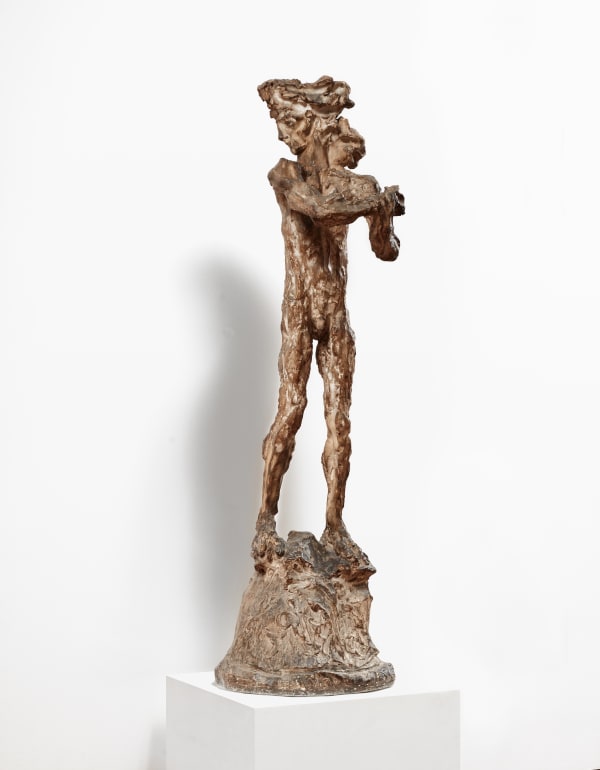FONTANA
Ben Brown Fine Arts and Colnaghi are delighted to present FONTANA, their first exhibition in partnership at the Colnaghi townhouse in New York. FONTANA re-examines the career of one of the most innovative artists of the twentieth century, Lucio Fontana, andfeatures works spanning the artist's career, including seminal paintings, drawings and ceramics from the 1930s to the late 1960s, which champion his lifelong appetite for experimentation.
The exhibition explores Fontana's beginnings as a sculptor; the artist found great enjoyment working on ceramics throughout his career and the medium is arguably the domain in which he experimented the most artistically. Fontana learned his father's trade as a sculptor of graveyard memorials and his early sculptural works were reflective of this traditional and figurative influence which can be seen in his bronze I Cavalli che Seguono la Vittoria (Bozzetto) (1936) and terracotta bust, El Rojo (1941). By the time the war was over, Fontana's ceramics had reached the peak of baroque exuberance. Though the traditional subject matter continues in later works such as the exquisite polychrome glazed ceramic Figura Femminile con Fiori (1948) and Corrida (1948-1950), Fontana's ceramics became increasingly abstract and the finish, colour and texture is influenced by his theories on spatialism, as terracottas from the 1960s depict the cuts and buchi for which he is most widely known.
Fontana's first ambiente spaziale or 'spatial environment' was created in 1949. This infamous and transformative series continued until his death in 1968, and paved the way for a qualitative advance of 'spatial' character in the sphere of his further involvement in architectural-environmental works. We will present early examples of these works, including Concetto Spaziale (1951); gouache and graffiti on paper, with stark punctures opening the picture plane into infinity. One of the most significant examples of Fontana's white tagli paintings is Concetto Spaziale, Attesa (1966), an imposing single white cut which was exhibited as part of the artist's grand installation in the Italian pavilion at the 1966 Venice Biennale. This work has been in a private collection for nearly two decades. In 1966 Fontana presented an entire room of white tagli at the Venice Biennale; '[w]hite represented, as we know, for Fontana the "purest, least complicated, most understandable colour," that which most immediately struck the note of "pure simplicity," "pure philosophy," "spatial philosophy," "cosmic philosophy" to which Fontana more than ever aspired during the last years of his life.'[1] Following his acclaimed installation, Fontana won the International Grand Prize for Painting, signifying the height of his practice.
The exhibition is held at Colnaghi, 38 E 70th Street, New York and viewing is by appointment only.
https://www.metmuseum.org/exhibitions/listings/2019/lucio-fontana-on-the-threshold
[1] J. van der Marck & E. Crispolti, Lucio Fontana, Vol. I, Brussels, 1974, p. 137.


![Lucio Fontana, Concetto Spaziale, [Attesa], 1964](https://artlogic-res.cloudinary.com/w_600,c_limit,f_auto,fl_lossy,q_auto/artlogicstorage/benbrown/images/view/4766496e8e7c295e98de3cd32db5d358j/benbrownfinearts-lucio-fontana-concetto-spaziale-attesa-1964.jpg)








